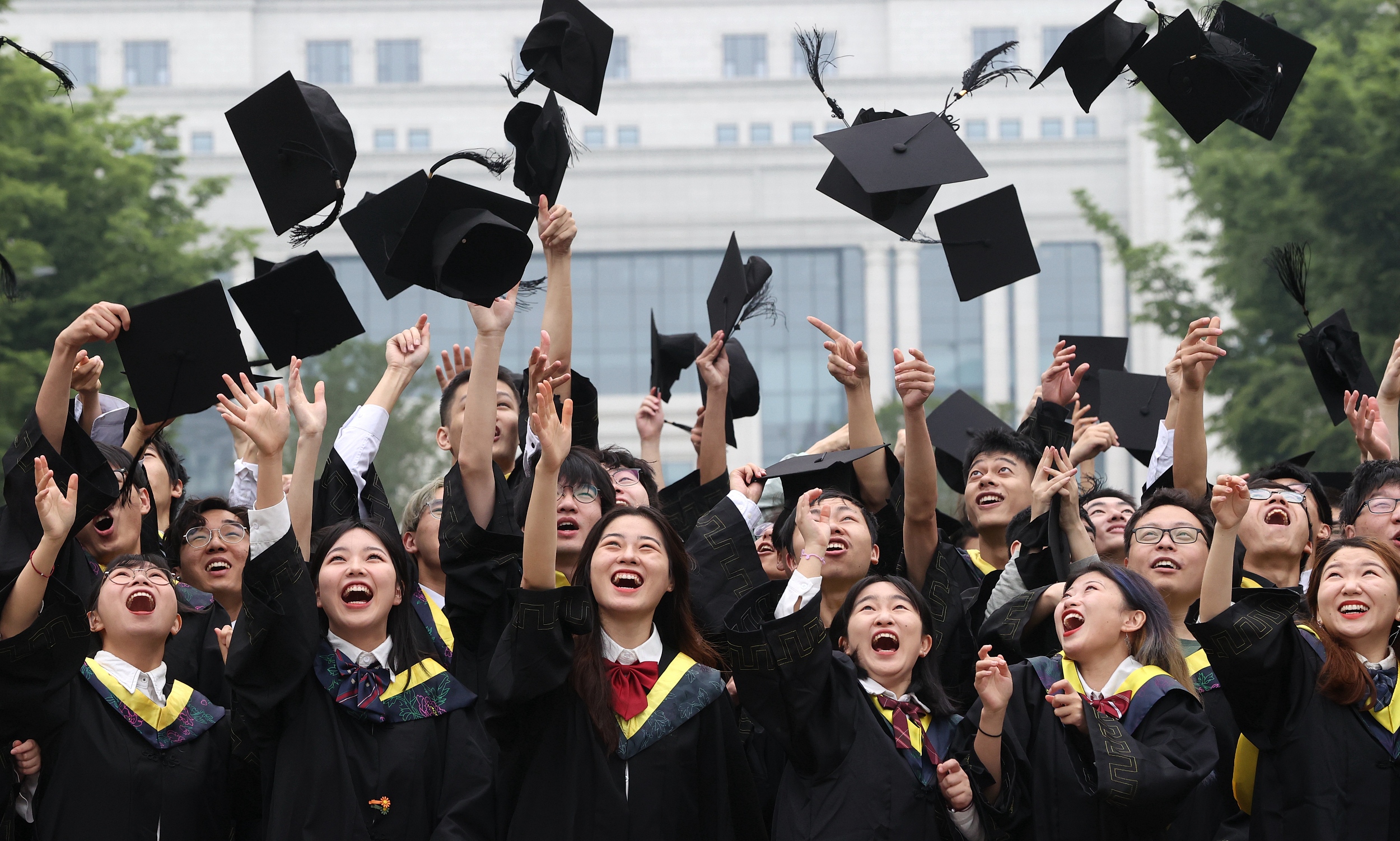The Rise of China's Higher Education

College students take graduation photos for youth. (PHOTO: VCG)
By QI Liming
The development and success of education plays a big part in a country's comprehensive national strength. Additionally, education, especially higher education, serves as an important support mechanism for a leading country to achieve more self-reliance and strength in science and technology.
This year saw Chinese universities leapfrog their way up the international rankings. Even though the selection criteria and ranking data do not provide detailed information on the overall strength of universities listed, the rankings do at least provide some insights.
Global research and knowledge shifting from West to East
China is on the verge of a historic breakthrough into the world's top 10 universities, according to the latest Times Higher Education (THE) World University Rankings released in September, with its highest placed entry now at 12.
As THE World University Rankings reported, Tsinghua University moved up from 16th to 12th, closely followed by Peking University moving from 17th to 14th.
In the latest versions of the other lists, the QS World University Rankings and the Academic Ranking of World Universities, these Chinese entries climbed to 17th and 22nd respectively.
Forbes magazine said this represents a remarkable rise for a country that six years ago had just two representatives in the top 100 and a highest rank of 27.
While the U.S. overall picture is of continuing long-term decline, it is the long-anticipated rise of China’s universities that represents the big story of this year's rankings, well and truly marking their arrival on the world stage.
One of the reasons for the U.S. poor showing is falling levels of research funding relative to other countries, according to THE. In contrast, in China, South Korea, Canada and Australia, universities' average proportion of research income has increased since 2019.
"There's no doubt this new data provides further, hard evidence that the balance of power in the global research and knowledge economy continues to shift from the West to the East, with potentially profound implications for the world," said Phil Baty, THE's chief global affairs officer.
Overall strength of Chinese universities being continuously improved
China had just four universities in the top 200 in THE's first rankings in 2004, but 20 years later has 13, with six in the top 60 and two on the brink of breaking into the top 10.
And based on current progress, the Chinese mainland would be home to a world top 10 university in the near future said Baty. This would break the stranglehold of U.S. and U.K. universities on the rankings.
"[The] Chinese mainland is a remarkable case study of exceptional, consistent improvement. It now has world-class universities to rival any in the world." added Baty.
According to the University World News website, the Chinese mainland continues its overall rise in the rankings this year, with an average overall score that has improved from 35.9 three years ago to 41.8, driven by improvements in research reputation and research publication citations.
"[The] Chinese mainland's rise and rise up the global rankings in recent years seems to have no limits," said Baty, adding that it has already overtaken the U.S. in terms of the sheer volume and quality of academic research it produces.
According to the Nature Index released in June 2023, in the first half of this year, some universities that are little known outside China are rapidly surpassing their more established counterparts in the West in high-quality scientific research. The index was based on scientific research output between February 1, 2022 and January 31, 2023, using "simple, transparent and current metrics that demonstrate high quality research and collaboration."
Seven of the top 10 university contributors were from China in the updated list, maintained by the academic journal Nature, that tracks contributions to research articles published in 82 of the world’s most influential natural science journals, according to the index.






